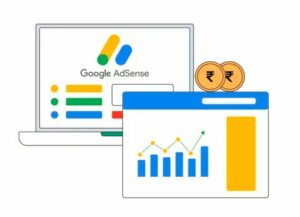In today’s digital age, data is the lifeblood of online success. Data analytics is the process of examining, cleaning, transforming, and interpreting data with the aim of discovering useful information, informing conclusions, and supporting decision-making. Google AdSense, a widely used advertising program, is no exception to this rule. In this comprehensive article, we will explore the powerful synergy between data analytics and Google AdSense, and how leveraging the insights from data can supercharge your online advertising efforts.

The Evolution of Online Advertising
Before we dive into data analytics, let’s understand the backdrop against which Google AdSense operates. Online advertising has come a long way since the early days of the internet. As the online landscape has grown, so has the complexity and sophistication of digital advertising strategies.
Google AdSense, launched by Google in 2003, revolutionized online advertising. It offered website owners a way to monetize their online content by displaying relevant ads. Advertisers, on the other hand, could tap into Google’s extensive network to reach their target audience.
Data-Driven Advertising
In the world of online advertising, data is everything. It’s not just about reaching the right audience; it’s about reaching the right audience at the right time with the right message. This level of precision can only be achieved through data analytics.
Data analytics helps advertisers and publishers understand their audience’s behavior, preferences, and interactions. It enables them to fine-tune their ad campaigns for maximum impact and ROI. Here’s how data analytics enhances the performance of Google AdSense:
1. Audience Segmentation
One of the fundamental principles of data analytics is segmentation. Advertisers can segment their audience based on various criteria, including demographics, location, device, interests, and more. Google AdSense offers powerful tools for audience segmentation, allowing you to create highly targeted campaigns.
For example, if you run a tech blog, you can use data analytics to identify which topics are most popular among your readers. With this information, you can serve tech-related ads to visitors interested in those topics.
2. Performance Analysis
Data analytics provides a wealth of information about the performance of your ad campaigns. Advertisers can track metrics like click-through rates (CTR), conversion rates, and revenue generated. This data helps you understand which ads are performing well and which need improvement.
For publishers, analyzing the performance of ads displayed on their websites is crucial. Data analytics can reveal which ad formats, placements, and sizes are delivering the best results. Publishers can then optimize their ad layout for higher click-through rates and revenue.
3. A/B Testing
A/B testing is a common practice in online advertising, and data analytics plays a central role. With A/B testing, advertisers can create two versions of an ad or landing page and show them to different segments of their audience. By comparing the performance of both versions, they can determine which one is more effective.
Google AdSense allows advertisers to conduct A/B testing for ad units. By analyzing the data, you can identify the ad design, copy, or placement that resonates best with your audience.
4. Content Optimization
For publishers using Google AdSense, data analytics can inform content optimization strategies. By analyzing which topics or articles attract the most traffic, you can focus on creating content that aligns with your audience’s interests. This, in turn, can lead to higher ad revenue as more visitors engage with your content and ads.
5. Ad Placement
Data analytics can guide publishers in optimizing ad placement on their websites. By analyzing user behavior and engagement data, you can strategically position ads where they are most likely to capture the attention of your audience. This leads to higher visibility and, consequently, higher ad revenue.
6. Fraud Detection
Data analytics tools are also instrumental in detecting and preventing ad fraud. Click fraud, for example, can artificially inflate ad costs and skew performance metrics. With robust analytics, you can identify suspicious patterns and take action to mitigate fraud, ensuring your ad budget is spent effectively.
7. Predictive Analytics
The power of data analytics extends beyond historical performance analysis. Predictive analytics leverages historical data to make informed predictions about future performance. Advertisers can use this approach to forecast ad campaign outcomes and allocate budgets effectively.
8. Real-Time Insights
The real-time nature of data analytics is a game-changer in online advertising. You can access up-to-the-minute insights about ad performance, allowing you to make quick decisions and adjustments to optimize your campaigns as they unfold.
Challenges and Considerations
While analytics offers tremendous advantages, it’s not without its challenges. Here are some key considerations:
1. Data Privacy and Compliance
Adherence to data privacy regulations is paramount. You must ensure that you are collecting and using data in compliance with laws like the General Data Protection Regulation (GDPR) and the California Consumer Privacy Act (CCPA).
2. Data Quality
The accuracy and reliability of the data you collect are crucial. Inaccurate or incomplete data can lead to poor decisions and wasted resources.
3. Data Security
Protecting the data you collect is a significant concern. Data breaches can have serious consequences, including reputational damage and legal liabilities.
4. Balancing Automation and Human Insight
While data analytics tools can provide automated insights, the human touch is still essential. Experienced marketers and data analysts are needed to interpret data and make strategic decisions.
Conclusion: A Powerful Partnership
Data analytics and Google AdSense make a formidable partnership in the world of online advertising. Data-driven insights enable advertisers to target the right audience, optimize their ad campaigns, and achieve better results. For publishers, data analytics helps in content optimization, ad placement, and maximizing ad revenue. As the digital advertising landscape continues to evolve, this partnership is set to play an increasingly central role in the success of online advertising efforts.
